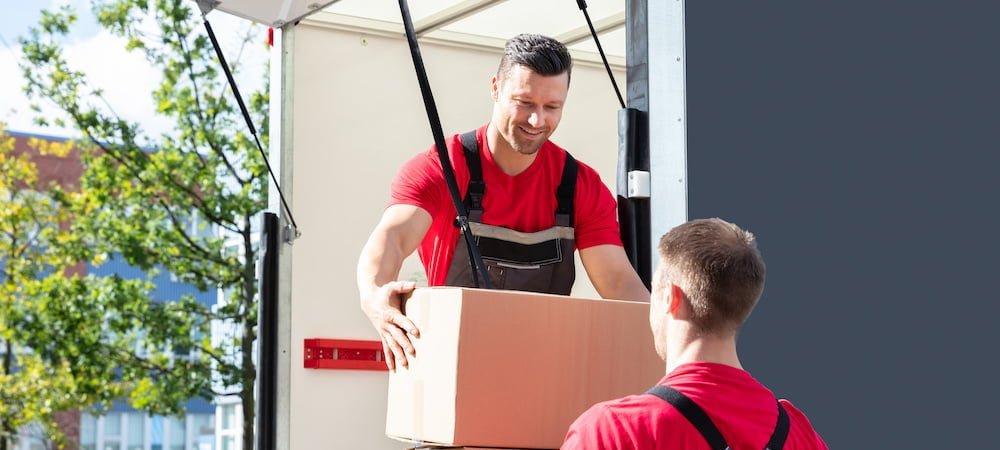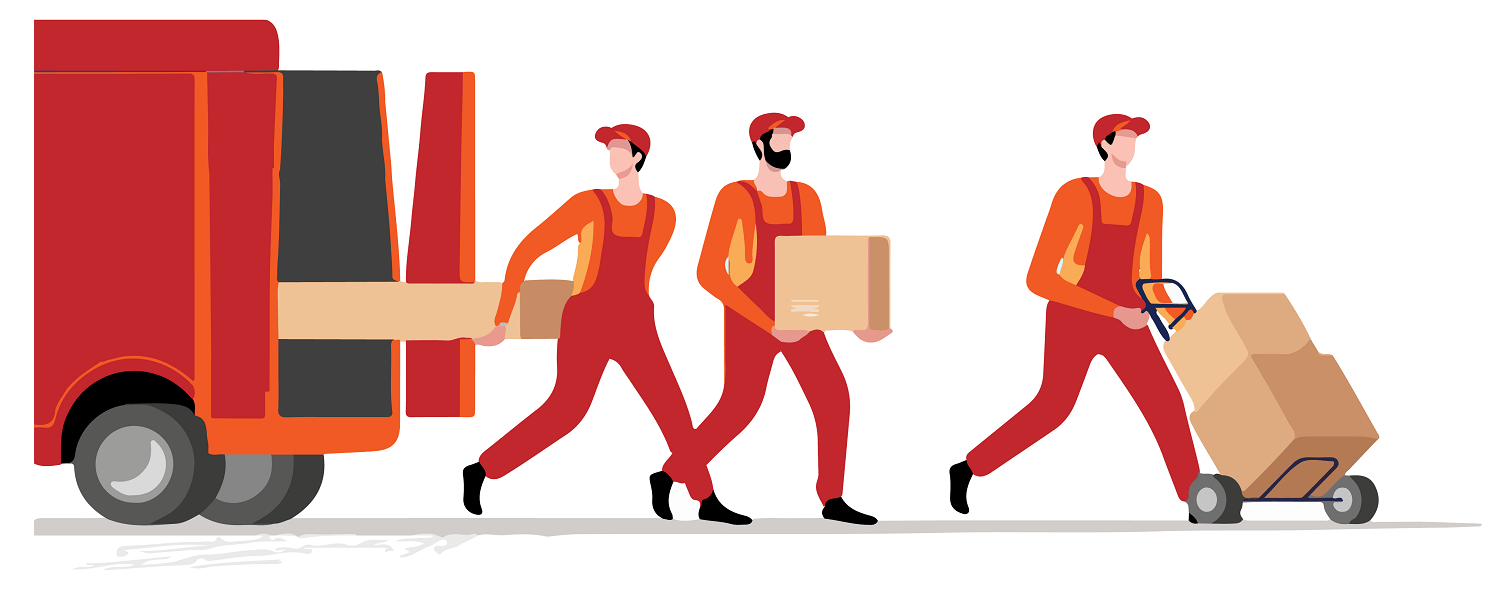Free Moving Estimates: Specialist Moving Professionals Can Help Make Your Transition Smooth And Hassle-free
History and Development of Moving Solutions
The Dawn of Moving: From Muscle to Makers
Photo this: a handful of strong guys hauling heavy trunks on wooden carts, navigating cobblestone streets with sweat and decision. Before the modern-day moving industry took shape, moving was a brutal, labor-intensive job. In ancient times, moving often implied counting on large physical strength and fundamental tools. The absence of specialized services meant households and merchants needed to coordinate every information themselves, frequently running the risk of damage or loss.
Isn't it fascinating how need fuels development? As cities broadened and commerce grew, the requirement for effective, trusted moving services became glaringly apparent. Enter the age of horse-drawn wagons and later, motorized lorries, which transformed how belongings took a trip from one location to another.
Industrial Revolution: The Catalyst for Modification
The 19th century's industrial boom reshaped lots of aspects of life, consisting of how individuals moved. Suddenly, city migration rose, and with it, the demand for professional movers increased. No longer was moving a basic task; it developed into a customized service offering:
- Packing proficiency to safeguard delicate items
- Organized packing methods taking full advantage of area
- Transportation services customized to different ranges
This period marked the birth of business devoted exclusively to moving, preparing for today's complex logistics and customer-centric methods.
Technological Advancements and Their Impact
Can you picture moving without modern devices? The advent of hydraulic lifts, forklifts, and pallet jacks changed the market overnight. All of a sudden, movers could manage bulky furnishings and heavy home appliances with ease, lowering injuries and improving effectiveness.
The integration of digital innovation triggered a brand-new wave of development. GPS tracking, online reservation platforms, and real-time stock management have actually become staples in the moving services landscape. These tools not just enhance transparency however also empower consumers to stay linked and notified throughout their moving journey.
Key Turning Points in Moving Provider Development
| Era | Development | Significance |
|---|---|---|
| Ancient Times | Manual labor and standard carts | Foundation of moving as a need |
| 19th Century | Horse-drawn wagons and packing services | Birth of professional moving companies |
| 20th Century | Motorized trucks and mechanized equipment | Increased performance and scale |
| 21st Century | Digital combination and GPS innovation | Boosted customer experience and logistics |
Reflections on the Journey
Assessing the development of movers, one might question: how did a basic act of transporting personal belongings become an advanced market? It's a tale of durability, adaptation, and continuous enhancement. From the sweat-soaked streets of old to the precision-driven operations of today, the history of moving services is as dynamic as the individuals who count on them.
Next time you pack a box or employ a mover, think about the layers of history ingrained in every action. The journey of movers encapsulates human ingenuity, changing what was when an overwhelming task into a seamless experience.
Checking out the Spectrum of Moving Services
When the time concerns shift your life from one address to another, the variety of moving services offered can feel like browsing a maze. Do you require a basic loading and dumping team, or does your relocation demand the skill of full packing and unpacking? Understanding the nuances can save hours of aggravation and unexpected expenses.
Common Types of Moving Services
- Regional Moves: Designed for relocations within a city or metropolitan location, these services usually run on a hourly basis, best for short ranges.
- Long-Distance Relocations: Covering moves beyond 100 miles, these need more coordination, from logistical preparation to secure transport, often priced by weight and range.
- Full-Service Relocations: Movers manage everything-- packing, loading, transferring, unloading, and in some cases even unpacking. Suitable for those pushed for time or energy.
- Self-Service Relocations: You pack and fill your valuables, while the company handles transport and dumping. A happy medium offering cost savings and some convenience.
- Specialty Moves: For vulnerable, large, or valuable items like pianos, antiques, or art work, requiring specialized devices and expertise.
Specialist Tips to Navigate Your Moving Service Choices
- Prioritize Flexibility: Select a service that adapts to unforeseen hold-ups or last-minute changes-- rigid schedules can turn a smooth move into a logistical headache.
- Check Insurance Coverage Options: Not all moving business supply the same level of protection. Comprehending your protection can prevent distress if something goes awry.
- Request In-depth Inventories: An accurate product list avoids conflicts and ensures accountability, specifically when dealing with long-distance or specialized moves.
- Think About Season: Seasonal demand can impact accessibility and prices. Early reserving during off-peak seasons might grant much better service and versatility.
- Ask About Packaging Products: High-quality boxes, bubble wrap, and cushioning can be the distinction between a scratched treasure and a beautiful arrival.
Table: Service Features Compared
| Service Type | Who Loads? | Transportation Mode | Typical Prices Model | Suitable For |
|---|---|---|---|---|
| Regional Move | Client or Movers | Truck | Hourly | Brief ranges, little loads |
| Long-Distance Move | Movers | Truck or Container | Weight & & Distance | Cross-state or regional relocation |
| Full-Service Move | Movers | Truck | Flat or Weight-Based | Time-sensitive, high-stress relocations |
| Self-Service Move | Customer | Truck or Container | Flat or Per hour | Cost-conscious, hands-on movers |
| Specialty Move | Movers with competence | Specialized Equipment | Custom Quote | Vulnerable or valuable products |
The Unseen Complexity Behind Each Choice
Have you ever wondered why moving appears simple and easy on television but turns into a cascade of last-minute choices in reality? The truth lies in the intricacies of each service type. Full-service moves might seem like a luxury, however the knowledge involved in packing delicate heirlooms or dismantling large furnishings is a craft honed over years. Choosing for a self-service relocation might save money, however it demands an eager understanding of how to load efficiently-- did you understand that stacking strangely shaped boxes improperly can cause internal moving during transit, damaging vulnerable contents?
Picking the best kind of moving service is not almost benefit-- it's about safeguarding your memories and financial investments. What's your move's story going to be?

Packing and Moving Strategies
Ever tried to fit a suitcase that just will not close? That's the kind of puzzle professional movers resolve daily-- however on a much bigger scale. The secret lies not in strength however in tactical positioning and intelligent usage of space. Packing isn't merely about stuffing items into boxes; it's an art kind where every inch counts.
Layering for Success
Think of a painter layering colors to create depth. When packaging, start with much heavier items at the bottom, then cushion with softer materials like bubble wrap or towels. This prevents damage and takes full advantage of box stability. Oddly shaped products can slip into spaces, reducing wasted space.
- Wrap delicate products individually with tissue or foam to prevent scratches.
- Usage clothes as cushioning-- it's both efficient and environment-friendly.
- Fill empty spaces with packing peanuts or crumpled paper to minimize movement.
Labeling: The Unsung Hero

What great is perfect packing if you spend hours rummaging through boxes? Comprehensive labeling is a game-changer. Instead of vague tags like "Kitchen area," attempt this technique:
| Label | Description | Priority |
|---|---|---|
| Vulnerable - Glassware | Manage with care, includes delicate products | High |
| Fundamentals - Very First Night | Items required instantly after moving | Urgent |
| Books - Research Study Space | Stacked, heavy books | Medium |
Strategic Packaging Tips
- Take apart big furnishings and keep screws in identified bags taped to the pieces.
- Use uniform box sizes when possible-- stacking ends up being simpler and safer.
- Do not overpack boxes; weight limits exist for a factor. Goal for 40-50 pounds max.
- Wrap furnishings edges with moving blankets to avoid scratches throughout transit.
- Seal boxes with premium packing tape-- double layers on the bottom are essential.
Why do some movers swear by a color-coded system? Because it removes uncertainty on moving day. Appoint each space a color and mark boxes accordingly. This small step can save hours when dumping and unpacking.
Packing and moving need precision-- like a chess video game where every relocation counts. Have you ever saw how some movers handle bulky products effortlessly? They utilize angles and pivot points to browse tight corners without damage. It's not muscle; it's technique.
Unseen Struggles Behind the Moving Van Doors
Ever viewed a team of expert movers bring a grand piano through a narrow entrance and wondered how they pull it off without a scratch? The art of moving isn't just muscle and trucks; it's a delicate dance with unpredictability. Weather can flip from a sunlit true blessing to a torrential menace in minutes, turning a simple drive into a logistical maze.
One well-known obstacle is the labyrinthine layout of some homes or homes. Staircases too tight for dollies, doorways narrower than basic boxes, or elevators that hardly fit a couch-- website these physical peculiarities demand innovative options on the area. Movers often resort to unconventional strategies like dismantling furnishings or utilizing tailor-made padding to safeguard both the product and the residential or commercial property.
Precision Packaging: More Than Simply Covering
It's appealing to believe packing is merely stuffing boxes, however the reality is an intricate puzzle of weight distribution and fragility. Movers need to expect how products will shift throughout transit-- a mistake can mean shattered treasures or dinged up devices. The ace in the hole? Strategic layering and utilizing products with specific shock-absorbing qualities.
- Bubble wrap is basic, but alternating it with foam sheets can dramatically lower effect damage.
- Heavy items address the bottom; vulnerable ones nestle on top, cushioned by soft textiles.
- Identifying boxes not just by contents however by handling instructions makes sure quicker, more secure discharging.
Another less spoke about stress is the psychological toll. The clock ticks relentlessly, and every delay ripples through tight schedules. Remaining calm amidst disorderly last-minute modifications requires mental dexterity and group synergy.
Traffic Congestion and Timing: The Unnoticeable Challengers
| Barrier | Professional Strategy | Impact |
|---|---|---|
| Urban congestion | Route optimization apps and versatile scheduling | Reduces delays and fuel usage |
| Parking restrictions | Pre-arranged permits or tactical parking nearby | Prevents fines and time loss |
| Unpredictable weather condition | Waterproof coverings and contingency strategies | Protects the condition of products and equipment |
Do you truly know what it requires to keep a moving day on track? It's not practically strength or stamina; it's about foresight, adaptability, and a deep understanding of every piece of the puzzle. The next time you see movers at work, remember: behind that seamless operation lies a series of computed maneuvers and fast thinking that few ever notice.